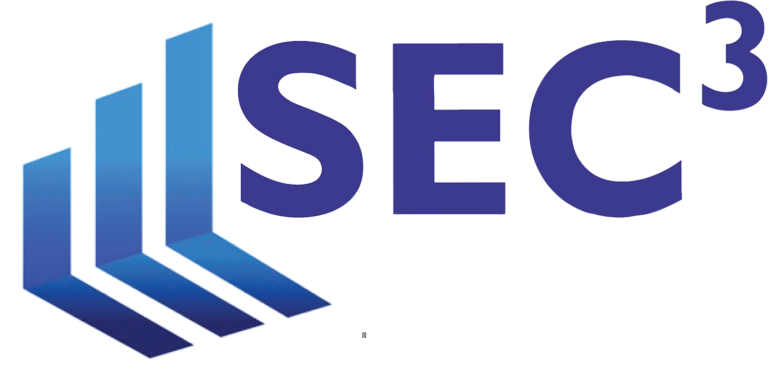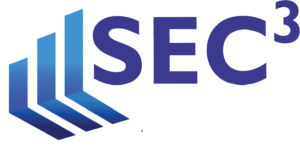Forms SLT, SHC and S are part of the reporting requirements of Treasury International Capital (“TIC”) reporting system administered by the U.S. Department of the Treasury. The TIC reporting system collects data for the United States on cross-border portfolio investment flows and positions between U.S. residents (including U.S.-based branches of firms headquartered in other countries) and foreign residents (including offshore branches of U.S. firms).
As discussed below, certain transactions and positions are not reported on Forms SLT, SHC and S and instead are reported to the Bureau of Economic Analysis, which is an agency of the U.S. Department of Commerce.
Form SLT (Aggregate Holdings of U.S. Long-Term Securities by Foreign Residents and Holdings of Foreign Long-Term Securities by U.S. Residents)
The U.S. International Investment and Trade in Services Survey Act (“IITSS Act”) requires certain investment funds, investment managers and custodians (collectively “Reporting Entities”) to complete Form SLT on a monthly basis and transmit it to the Federal Reserve. The intent of Form SLT is to provide information related to foreign securities held by US persons and US securities held by foreign persons. Form SLT compiles data related to Reporting Entities’ or their clients’ aggregated holdings and issuances of certain long-term securities (which include equity, debt, convertible securities as well as partnership and limited liability company interests)[1]. In particular, Form SLT provides for certain information to be reported with respect to (i) U.S. securities issued by U.S. resident issuers and held directly by foreign residents, e.g., an interest issued by a domestic investment fund to a foreign Investor, and (ii) foreign securities held directly by U.S.-resident “end-investors”, e.g., a domestic investment fund’s interest in a foreign investment fund (such as the investment of a U.S. feeder in a Cayman master fund) or in a foreign portfolio company.
The reporting threshold for Form SLT is $1 billion. Under the IITSS Act, if reportable securities for a reporting entity have a total fair market value, on a consolidated basis, equal to or more than this threshold on the last business day of a reporting month, the reporting entity must submit a report for that month, and must also submit a report for each remaining month in that calendar year, regardless of whether the threshold is met in subsequent months. Form SLT must be filed by the 23rd calendar day of the following month. It is important to note that foreign securities owned by a domestic fund but held by a U.S.-resident custodian, including a prime broker, are reportable only by that custodian and do not count toward the $1 billion threshold of the domestic fund. Similarly, a domestic fund does not report securities issued to foreign investors where such securities are held by a U.S.-resident custodian. Furthermore, securities held as part of a “direct investment relationship” are not reportable. In general, a direct investment relationship exists when a person owns, directly or indirectly, 10% or more of the voting equity securities of a business. Investments by a manager directly into a master or feeder fund are not reportable on Form SLT because they are always considered a “direct investment” as opposed to investments of the feeder fund into a master fund which are reportable.
In the event a US manager meets the Form SLT reporting threshold, the manager will report on behalf of all of its domestic affiliates. Different rules apply for foreign managers with US domestic funds. Those managers report only for each of their US funds that meets the reporting threshold separately (i.e. they do not consolidate the holdings of the US funds). The rules of Form SLT allow, to a certain extent, for double counting of assets so the $1 billion threshold may be easier to reach that one would think. Form SLT defines different categories of assets and certain assets will meet more than one definition and thus be required to be reported more than once. For instance, if a foreign investor invests $500 million in a domestic (U.S. domiciled) fund and the fund purchases $500 million worth of foreign securities with that investment (and holds those securities with foreign custodians), then that fund reaches the $1 billion threshold. The fund in this case reports both as a US-issuer and as a US-investor. In the case of a U.S. feeder fund investing in a Cayman Islands master fund, the securities reported by the feeder are only the shares of the Cayman master, and not the foreign securities held by the master (note that there is no look-through; the foreign securities holdings of the foreign master are not attributable to the domestic feeder and are not reportable). The calculation rules of the reporting threshold are in fact very complex.
Form SHC (U.S. Ownership of Foreign Securities)
Also mandated by the ITSS Act, Form SHC is a survey held every five years that requires reporting by U.S. persons who own foreign securities and or who invest in foreign securities on behalf of others, such as investment managers/fund sponsors. Such foreign securities include equities, long-term debt securities, and short-term debt securities (including selected money market instruments). A U.S. investment manager will report its own foreign portfolio holdings and those of its U.S. clients including its U.S. investment funds and its separately managed accounts with U.S. persons. Unlike Form SLT, Form SHC does not collect data on U.S. securities held by foreign residents. Form SHC includes holdings of both long-term and short-term foreign securities as opposed to Form SLT, which only includes long-term securities. Securities held by US custodians, which are not reportable on Form SLT, are reportable on Form SHC, but in a summarized manner. In fact, Form SHC has three schedules. Schedule 1 includes information about the issuer. Schedule 2 includes information about the holdings of foreign securities whose safekeeping the investment manager has entrusted directly to foreign-resident custodians or U.S.-resident or foreign-resident central securities depositories. Schedule 3 includes information about holdings of foreign securities held by US custodians if such holdings are over the $100 threshold.
Similar to Form SLT, “direct investments” are not reportable on Form SHC. The current survey reporting threshold on a consolidated basis is $100 million as of December 31, 2011. The deadline for submitting Form SHC is March 2, 2012.
Form S (Purchases and Sales of Long-Term Securities by Foreigners)
The IITSS Act requires certain investment funds, investors, and other U.S. entities to report to the Federal Reserve Bank on Form S their monthly purchases and sales of long-term (both U.S. and foreign) securities in transactions entered into directly with foreign residents, e.g. an issuance of an interest in a domestic investment fund to a foreign Investor, or a redemption of such an interest held by a foreign Investor or the investment of a domestic investment feeder fund into an offshore fund, or the redemption of such an interest. U.S. entities must also report transactions conducted in these securities by foreign agents acting on their behalf or on behalf of their customers. So, unlike Form SLT and Form SHC, which are holdings reports, Form S is a transactions report. The reporting threshold applicable to Form S is reportable transactions amounting to $50 million or more during a reporting month. If reportable transactions (purchases or sales) meet or exceed the reporting threshold in any month, a report is required for each remaining month in the calendar year, regardless of whether the threshold is met in subsequent months. However, note that Form S is filed by the entity that actually places a long-term foreign security order (that is, the US broker or dealer placing the trade), which makes it unlikely that an investment manager would be required to report unless the investment manager places trades directly with foreign broker-dealers. The purchase of an interest of a foreign master fund by a domestic feeder is also a direct purchase that may be reportable.
Transactions in which another U.S.-resident entity acts as an intermediary for a foreign resident should not be reported. Note that U.S.-resident entities that provide only custodial or settlement functions are not intermediaries for purposes of Form S. Finally, “direct investment transactions” are not reportable on Form S. Assuming that the Form S reporting threshold is met, an adviser will report on behalf of all its domestic affiliates.
The report must be filed by the 15th day of the month following the month in which the reporting threshold was met, and for all subsequent months in that calendar year.
BE Forms (Direct Investments Between Affiliated Domestic and Foreign Entities)
As mentioned in the above discussion of Form SLT, Form SHC and Form S, “direct investment” transactions and positions are excluded from the TIC reporting requirements. Instead, these transactions and positions are reported separately to the Bureau of Economic Analysis.
The BE Form requirements are complex and difficult to apply to an investment fund or investment manager, and the reporting thresholds vary for each form. Please contact us if you think you have direct investments.
Please read below two examples given by the Federal Reserve in its instructions to the forms:
Example 1
A U.S. investment manager creates a Cayman master fund, a Cayman feeder fund and a U.S. feeder fund. The investments between the U.S. manager and the Cayman funds are direct investments since the investment manager controls them and may be reportable on Forms BE. However, the investment that the U.S. feeder fund has in the Cayman Master Fund is a portfolio investment and should be reported in the TIC system. Therefore, purchases and sales of the master fund shares/interests by the U.S. feeder fund should be reported as transactions in foreign equity by the U.S. feeder fund on the TIC S and the U.S. feeder fund’s investments in the foreign master fund should be reported by the U.S. feeder fund as ownership of foreign equity on the TIC SHC (A) and the TIC Form SLT report. If a U.S. custodian holds the foreign security, the U.S. custodian would have the reporting responsibility to report on the TIC SHC (A) and the TIC Form SLT report.
Example 2
A U.S. investment manager creates a U.S. master fund, a Cayman feeder Fund, and a U.S. feeder fund. As in the example 1, the investments between the U.S. manager and the foreign feeder fund are direct investments. However, the investment that the foreign feeder fund has in the U.S. master fund is a portfolio investment and should be reported in the TIC system. Purchases and sales of the master fund shares by the foreign feeder fund should be reported on the TIC S as transactions in U.S. equity by the U.S. master fund and the U.S. master fund should report the ownership of their shares by the foreign feeder fund as the issuer of the domestic security on the TIC SHL (A) and TIC Form SLT report. If a U.S. custodian holds the domestic security, the U.S. custodian would have the reporting responsibility to report on the TIC SHL (A) and TIC Form SLT report.
Please let us know if you need assistance working through determining whether or not you need to complete these filings and whether you need guidance completing the filing(s).
[1] Long-term securities are defined as those without a stated maturity or with an original term-to-maturity in excess of a year.

